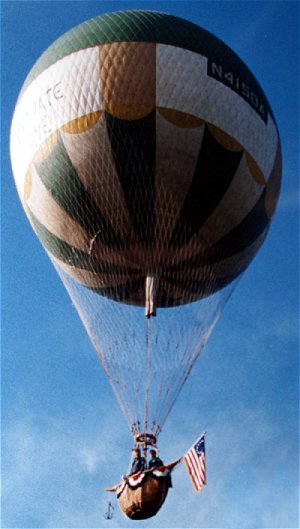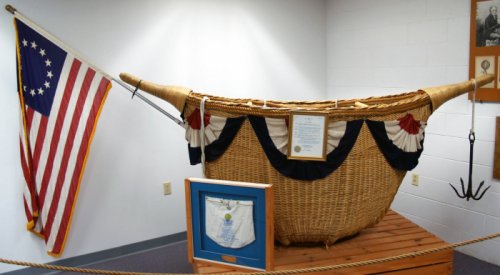Franklin and Balloons
Today, Ben Franklin assesses a newborn child. The University of Houston's College of Engineering presents this series about the machines that make our civilization run, and the people whose ingenuity created them.
Benjamin Franklin is almost as famous for saying "What is the use of a newborn child?" as he is for flying his kite in a thunderstorm. On November 21st, 1783, just after Pilátre and Rozier made the first manned ascent in a Montgolfier hot-air balloon, someone asked Franklin what use their feat could possibly have.
But more to the point than Franklin's famous riposte was a letter he wrote nine days later. It was addressed to the great British Naturalist Joseph Banks, with a copy to Dutch plant physiologist Jan Ingenhousz, then working in Vienna. What makes the letter remarkable is that Franklin had, just that day, watched a second balloon ascent -- this one filled with hydrogen (or, as Franklin still calls it, inflammable air.)
In just nine days the technology of flight had leapt that far ahead. Franklin's letter vibrates with the drama of the moment. The aeronauts are still in the air, and he worries about their safe landing. Franklin's great analytical mind has not yet turned to the potential uses that he knows this newborn babe promises.
A month-and-a-half-later, Franklin writes a second letter to Ingenhousz whom he'd recently met when Ingenhousz traveled all the way from Vienna just to met him. Ingenhousz had responded to the first letter with a several questions about that second ascent. 
Yes, answers Franklin, it should be okay to send an observer to one of the balloon makers, since none of this is secret. But send someone ingenious if you plan to make a balloon of your own. The technology is sophisticated and much can go wrong.
Next, he tells Ingenhousz, it's too bad so many rulers fail to take balloons seriously, because it'd be impossible to defend against an attack of steerable balloons. He suggests that an invading force of 5000 balloons, two men in each, would cost about as much as one ship of the line, and would pose a far greater threat.
Ingenhousz had also suggested that British nationalism might be what had kept then from developing their own balloons. (Remember, this is still just two months after the very first manned balloon ascent.) Franklin says, yes, the British are fine mechanicians but they do tend to be held back by nationalistic pride.
Franklin ends by discussing the relative merits of hydrogen and hot air. Hydrogen costs a lot more and takes days to generate, but it also has five times the lifting force and you don't need a fire to stay aloft. He mentions some work being done on a gas made from sea coal, but he doesn't yet know its relative lifting force.
The day after he wrote Ingenhousz was Franklin's 78th birthday. He died, back in Philadelphia, six years later -- 2-1/2 years too soon to see a French aeronaut fly a balloon there for an audience that included George Washington. One can only wonder how history might've been changed if that ever-active, ever-curious observer, Ben Franklin, had still been around to cheer that one on.
I'm John Lienhard, at the University of Houston, where we're interested in the way inventive minds work.
The images above and below are both from the Hartford Air Museum (photos by JHL). The one above shows a replica of Blanchard's first American Balloon Ascent, made in Philadelphia on January 9, 1793
For the text of Franklin's letter to Banks, see: http://www.fordham.edu/halsall/mod/franklin-science.html
And, for good general material on Franklin and ballooning, see: http://www.schillerinstitute.org/educ/hist/Franklin_flight.html
For more on the first use of hydrogen, see Episode 1604. For more on the first American balloon ascent, made in Philadelphia, see Episode 1351.
My thanks to UH Mech. Engr. Prof. Alan Powell for suggesting the topic.

Replica of the basket used in the first American Balloon ascent